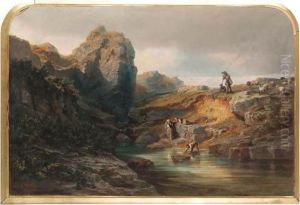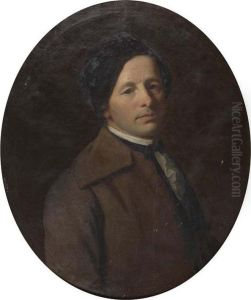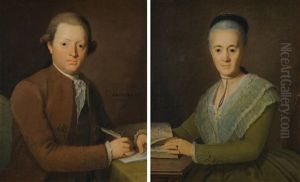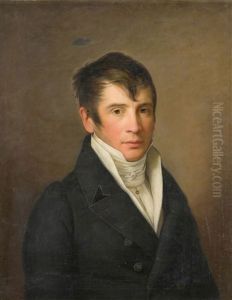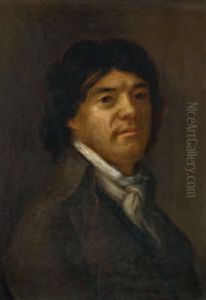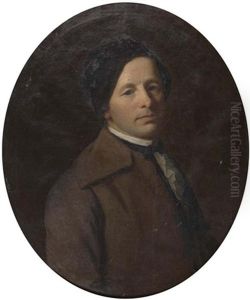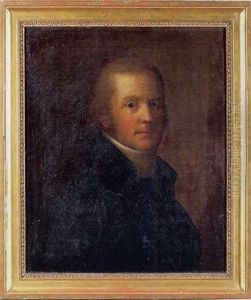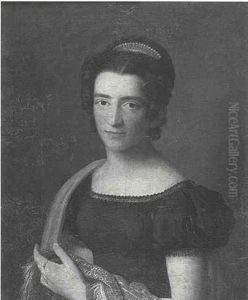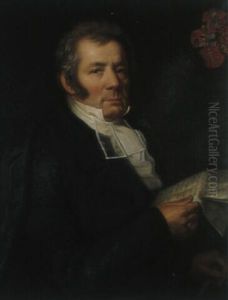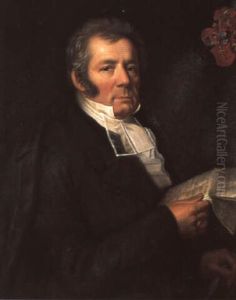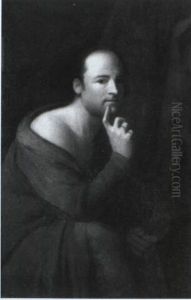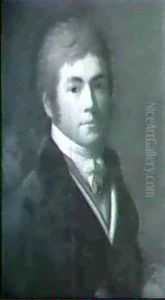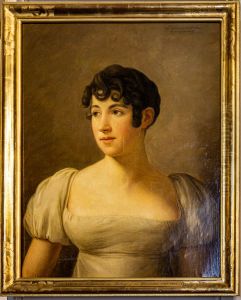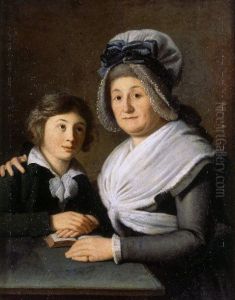Felix Maria Diogg Paintings
Felix Maria Diogg was a Swiss portrait painter born on October 15, 1762, in the town of Andermatt, then part of the Old Swiss Confederacy. He was one of the most significant Swiss portraitists of the early 19th century, and his work provides valuable insight into the cultural and social life of Switzerland during this period. Diogg's early life and education are not extensively documented, but it is known that he was initially self-taught before he sought formal training in art.
In pursuit of his artistic education, Diogg moved to Rome, Italy, which was a major center for the arts at the time. There, he studied under the tutelage of the prominent painter Pompeo Batoni, who was well-known for his classical style of portraiture. Batoni's influence is evident in Diogg's work, which often features a refined, neoclassical approach. After his studies, Diogg returned to Switzerland, where he established himself as a portraitist for the Swiss bourgeoisie and the clergy, working mainly in the cantons of Uri and Schwyz.
Over the years, Diogg's reputation grew, and he became known for his ability to capture the character and social standing of his subjects with a graceful and realistic touch. His portraits are characterized by a delicate rendering of facial features and an attention to detail in the depiction of clothing and accessories, which were often used to signify the status of the sitter. Diogg's work was not limited to portraiture; he also produced religious paintings and landscapes, although these were less prominent in his oeuvre.
Diogg's contribution to Swiss art was recognized in his lifetime, and he received significant commissions, including portraits of notable figures of the time. He remained active as an artist until his death on August 19, 1834, in Altdorf, the capital of the canton of Uri. While Diogg may not be widely known internationally, his portraits are an important part of Swiss cultural heritage and continue to be studied for their historical and artistic value. His works are preserved in various Swiss museums and private collections, offering a glimpse into the life and society of Switzerland in the late 18th and early 19th centuries.
